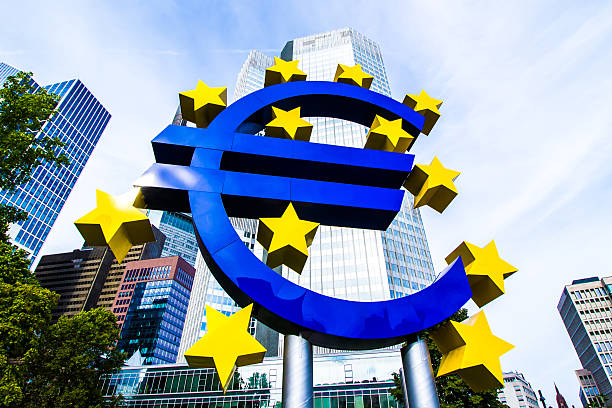Eurozone Economy Posts Modest Growth in Q2, Faces Headwinds from U.S. Tariffs

Eurozone GDP grew 0.1% in Q2, slightly above forecasts but sharply lower than Q1 growth.
Annual GDP rose 1.4%, beating expectations but still slowing from the previous quarter.
Germany and Italy contracted, while France posted stronger-than-expected growth.
U.S. tariffs remain a threat, with a 15% levy on EU goods set to begin next month.
Long-term growth outlook downgraded, with uncertainty still weighing on investment.
The eurozone economy saw a slight improvement in the second quarter of 2025, growing by 0.1%, according to Eurostat data released Tuesday. This modest expansion outpaced expectations for flat growth, but still marked a sharp slowdown from the 0.6% expansion recorded in the first quarter.
On a year-on-year basis, gross domestic product in the 20-country bloc rose 1.4%, beating analysts’ forecasts of 1.2%, though down from the 1.5% annual growth seen in the previous quarter.
Despite the better-than-expected headline figures, the eurozone’s recovery remains fragile. Over the past few years, economic momentum has been constrained by high inflation, weak business investment, and cautious consumer spending.
Trade Tensions and Tariffs Add to Eurozone’s Challenges
Adding to the region’s economic uncertainty is the escalating trade tension with the United States. The Trump administration’s decision to implement a 15% tariff on most EU goods, starting next month, presents a fresh challenge for European exporters.
Although a framework trade deal between the U.S. and EU was reached over the weekend, which helped ease immediate concerns, the upcoming tariff hike will replace the previously anticipated 10% rate, introducing greater pressure on European industries.
Major firms, such as German sportswear giant Adidas (ETR: ADSGN), have already sounded the alarm. The company warned that the new trade barriers are likely to impact profits, reduce sales, and potentially discourage future investment.
Mixed Economic Performance Across Member States
Economic performance varied across the eurozone:
Germany, the bloc’s largest economy, contracted by 0.1% in Q2, reversing the 0.4% growth seen in Q1.
Italy also unexpectedly shrank by 0.1%, falling short of forecasts for slight growth.
France, however, exceeded expectations, with its economy expanding 0.3%, boosted by a recovery in household consumption.
These mixed results highlight the uneven recovery across the euro area and underscore the challenges faced by policymakers trying to sustain growth amid external pressures.
Growth Forecasts Revised Downward
Earlier this year, the European Commission downgraded its outlook for eurozone growth, projecting 0.9% GDP growth for 2025, down from the 1.3% forecast in November. The Commission’s projections for 2026 were also reduced to 1.4%, from a previous estimate of 1.6%.
These forecasts were based on the assumption that U.S. tariffs would remain at 10%, making the new 15% rate a potential downside risk not yet fully priced in.
As the eurozone continues to navigate external trade threats, internal disparities, and muted investment, the region’s economic resilience remains under scrutiny.
* The content presented above, whether from a third party or not, is considered as general advice only. This article should not be construed as containing investment advice, investment recommendations, an offer of or solicitation for any transactions in financial instruments.


